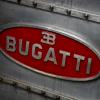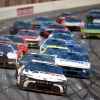
Ryan Blaney Disqualification Fiasco Is Latest Evidence of NASCAR’s Growing Credibility Problem
NASCAR messed up. Officials admitted a day after the Las Vegas race that they got it wrong and were rescinding the Ryan Blaney disqualification.
Some celebrated the move since the governing body recognized it was fallible and that mistakes happen before it humbly acknowledged its error. But there’s another side to this story. A side that suggests these types of mistakes should never happen.
Never.
When they do, it’s a major stain on the sport and, more specifically, on the credibility of those sanctioning it. And unfortunately, this isn’t the first example.
NASCAR rescinds Ryan Blaney disqualification after Las Vegas
Finishing sixth, Ryan Blaney had a solid day in Sin City in the first race of the Round of 8. Unfortunately for the 29-year-old driver, that good result was short-lived. NASCAR officials announced shortly after the race that the No. 12 car had been disqualified for a shock that didn’t meet the specified length in post-race inspection.
That penalty, while harsh, wasn’t odd. NASCAR hasn’t been afraid to penalize teams for violations due to modifying single-source supplied parts since the increasingly expensive Next Gen car debuted in 2022. In fact, the sanctioning body disqualified Kevin Harvick just a few weeks earlier at Talladega for multiple unsecured windshield fasteners.
However, Blaney’s situation took on a dramatically different tone a day later when NASCAR released a statement admitting it had made a mistake.
“Monday morning during its race weekend debrief, NASCAR discovered an issue with the damper template used for inspection,” the organization explained. “NASCAR then conducted a detailed investigation, and has restored the No. 12’s stage and race finishing positions from Sunday. NASCAR has taken internal steps to remedy this issue moving forward.”
NASCAR and its recent questionable rulings
For years, fans have rightly challenged NASCAR on its rules because the organization is secretive and has questionable enforcement. The Ryan Blaney disqualification drama is the latest example, but you don’t have to go back far to find other head-scratching examples.
Earlier this year, the sanctioning body penalized Denny Hamlin for his aggressive racing actions at Phoenix — not during or after the race, but days later when he discussed those actions on his Actions Detrimental podcast. Can you imagine the NFL, NBA, or MLB doing something similar?
But wait, there’s more.
Flashback to last year’s playoff race at Texas Motor Speedway when William Byron didn’t like how Hamlin had raced him and retaliated against the Joe Gibbs Racing driver by spinning him under caution. Unbelievably, NASCAR officials in the tower missed the incident.
Or so they claimed.
“So, I’ll have to be honest with you, Bob. When we were in the tower, we were paying more attention to the actual cause of the caution up there and dispatching our equipment. The William Byron-Denny Hamlin thing, we had no eyes on,” former NASCAR vice president of competition Scott Miller said in an impromptu press conference after the race. “We saw Denny go through the grass. And by the time we got to a replay that showed the incident well enough to do anything to it, we had gone back to green. But I’m not sure that that issue is completely resolved as of yet. We’ll be looking at that when we get back to work.”
Interestingly, NASCAR’s official Twitter account posted Byron’s in-car camera within minutes of the incident, clearly showing what had happened. The sanctioning body penalized the No. 24 team several days later.
Unfortunately, this won’t be the last time

After the Hamlin-Byron incident, NASCAR vowed to review its process and improve it going forward. Sound familiar?
And that’s the problem. NASCAR has a history of making mistakes that were entirely avoidable in the first place. Blaney’s DQ is another classic example.
Instead of penalizing the Penske car hours after the Sunday race and having to embarrassingly backtrack a day later, officials could have waited until they returned to Charlotte, confirmed that there was, in fact, a violation, and announced the finding. That’s what they’ve done in the past, including earlier this year with Chase Briscoe’s penalty for using a counterfeit part. In Blaney’s case, the error would have been discovered, and this latest embarrassing chapter would never have happened.
But it did.
Based on NASCAR’s recent history, this won’t be the last time.
To stay up to date on the latest happenings in NASCAR, including breaking stories you can’t find anywhere else, follow Kyle on YouTube and Twitter.



